| Date | Text | |
|---|---|---|
30 Nov 1934

Hayden Planetarium |
Hayden Planetarium (astronomy) Opening of the Hayden Planetarium in New York City. |
|
30 Nov 1934

Griffith Observatory |
Griffith Observatory (astronomy) Opening of the Griffith Observatory in Los Angeles, California. |
|
30 Nov 1934

Vitamin E |
Vitamin E (chemistry) Vitamin E is first isolated in a pure form by Gladys Anderson Emerson at the University of California, Berkeley. |
|
30 Nov 1934
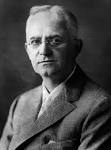
Eastman Kodak |
Eastman Kodak (chemistry) Eastman Kodak first market Kodachrome subtractive color reversal film as 16 mm movie film. It was invented by two professional musicians, Leopold Godowsky, Jr. and Leopold Mannes. |
|
30 Nov 1934
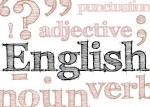
English |
English (ecology) English botanist Arthur Tansley introduces the concept of the ecosystem. |
|
30 Nov 1934

Charles Richter |
Charles Richter (geology) Charles Richter and Beno Gutenberg develop the Richter magnitude scale for quantifying earthquakes. |
|
30 Nov 1934
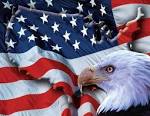
American |
American (history of science a) American virologist Hans Zisser publishes Rats, lice and history: being a study in biography, which... deals with the life history of typhus fever. |
|
30 Nov 1934

Cornish Engines Preservation Committee |
Cornish Engines Preservation Committee (history of science a) Cornish Engines Preservation Committee formed to conserve the Levant Mine beam engine in Cornwall, England. |
|
30 Nov 1934
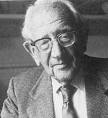
George Pólya |
George Pólya (mathematics) George Pólya develops counting techniques for graphs as algebra. |
|
30 Nov 1934

George K. Zipf |
George K. Zipf (mathematics) George K. Zipf proposes Zipf's law on probability distribution. |
|
30 Nov 1934

Ladislas J. Meduna |
Ladislas J. Meduna (medicine) Ladislas J. Meduna discovers metrazol shock therapy |
|
30 Nov 1934

Yellow Fever |
Yellow Fever (medicine) First vaccine for Yellow Fever |
|
30 Nov 1934
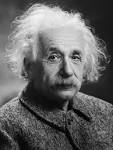
Einstein |
Einstein (physics) Einstein, Podolsky, and Rosen publish a paper arguing that quantum mechanics is not a complete physical theory (the EPR paradox). Discussion of this introduces the 'Schrödinger's cat' thought experiment. |
|
30 Nov 1934
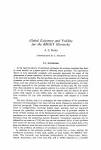
BBGKY hierarchy |
BBGKY hierarchy (physics) Jacques Yvon introduces S-particle distribution functions in classical statistical mechanics; they will later be included in the BBGKY hierarchy. |
|
30 Nov 1934

Callender-Hamilton bridge |
Callender-Hamilton bridge (technology) Callender-Hamilton bridge patented by A. M. Hamilton. |
|
30 Nov 1934

Roger Payne |
birth Roger Payne January 29 - Roger Payne, American biologist and zoologist |
|
30 Nov 1934

Michael F. Ashby |
birth Michael F. Ashby Michael F. Ashby, English materials engineer. |
|
30 Nov 1934

Agnes Pockels |
death Agnes Pockels Agnes Pockels (born 1862), chemist. |
|
02 Jan 1935
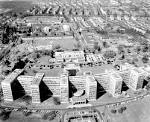
IG Farben |
IG Farben (pharmacology) IG Farben are granted a patent in Germany for the medical application of the first sulfonamide prodrug, Sulfonamidochrysoidine (KI-730; marketed as Prontosil). In February, Gerhard Domagk and others publish (in Deutsche Medizinische Wochenschrift) the first clinical results on its properties as an antibiotic, the first commercially available; and in November a team directed by Ernest Fourneau at the Pasteur Institute identify sulfanilamide as the active component. |
|
08 Jan 1935

A.C. Hardy |
A.C. Hardy (physics) A.C. Hardy patents the spectrophotometer. |
|
24 Jan 1935
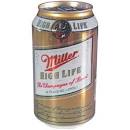
beer can |
beer can (technology) The first beer can is sold in Richmond, Virginia, United States, by the Gottfried Krueger Brewing Company. |
|
28 Jan 1935

Iceland |
Iceland (medicine) Iceland becomes the first country to legalize abortion on medical grounds. |
|
02 Feb 1935
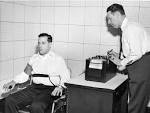
Lie detector |
Lie detector In 1935, the detective Leonard Keeler conducted the first use of his invention, the Keeler polygraph, or lie detector machine, on this day, in Portage, WI. Those examined were two criminals Cecil Loniello and Tony Grignano, who were convicted of assault at their trial where the results were introduced as evidence. |
|
15 Feb 1935
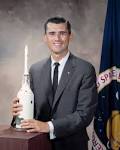
Roger B. Chaffee |
birth Roger B. Chaffee Roger B. Chaffee (died in accident 1967), American astronaut. |
|
26 Feb 1935
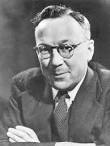
Robert Watson-Watt |
Robert Watson-Watt (physics) Robert Watson-Watt and Arnold Wilkins first demonstrate the reflection of radio waves from an aircraft, near Daventry in England; on June 17, the first radio detection of an aircraft by ground-based radar is made at Orford Ness. |
|
28 Feb 1935

Nylon |
Nylon In 1935, nylon was discovered by Dr. Wallace H. Carothers of DuPont. |
|
28 Feb 1935

polyamides |
polyamides (chemistry) March 1 – Working with polyamides to develop a viable new fiber for chemical company DuPont, American chemist Gérard Berchet working under the direction of Wallace Carothers first synthesizes the synthetic polymer nylon at Wilmington, Delaware. |
|
12 Mar 1935

Mihajlo Idvorski Pupin |
death Mihajlo Idvorski Pupin Mihajlo Idvorski Pupin (born 1858), physicist. |
|
14 Mar 1935

Arthur Rudolf Hantzsch |
death Arthur Rudolf Hantzsch Died 14 Mar 1935 at age 78 (born 7 Mar 1857). German chemist who won fame at the age of 25 for devising the synthesis of substituted pyridines. He studied stereochemistry of such nitrogen compounds. He synthesised pyridine (1882), cumaron (1886) and thiazol (1889) and he gave a nomenclature of heterocyclic compounds. His investigations of triphenylmethane coloring materials led to progress in the spectrographic analysis, and also the theory of chemical indicators. He was also noted for his study of acids, in which he showed their properties depended on reaction with a solvent; and the electrical conductivity of organic compounds. From 1907 he studied cryoscopy and UV-spectroscopy. |
|
22 Mar 1935
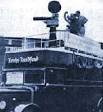
Early German TV |
Early German TV In 1935, television broadcasts begin in Berlin, Germany, with a low definition, 180 lines system. |
|
19 Apr 1935

Alonzo Church |
Alonzo Church (mathematics) Alonzo Church presents his paper "An unsolvable problem of elementary number theory", introducing his theorem on the Entscheidungsproblem, to the American Mathematical Society. |
|
10 May 1935
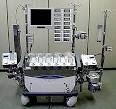
Heart-lung machine |
Heart-lung machine In 1935, American surgeon John Gibbon successfully maintained the cardiac and respiratory function of a cat using his invention, a rotating blood-film oxygenator in the first heart-lung machine. Thus, he had demonstrated that life can be maintained by an external pump acting as an artificial heart during an operation. After 18 years of improvements, on 6 May 1953, Gibbon successfully performed the first open-heart operation on an 18-yr-old patient, Cecelia Bavolek, demonstrating that an artificial device can temporarily mimic the functions of the heart. Modern versions allow surgeons today to perform bypass surgery and heart transplants. |
|
15 May 1935
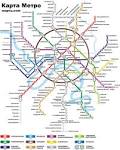
Moscow metro opening |
Moscow metro opening In 1935, the Moscow metro opened, transporting an estimated 285,000 people that day. Its subterranean spaces still feature chandeliers, marble, mozaics, murals and heroic statutes. Tsar Nicholas II had the first designs drawn up in 1902, intended to rival the Underground which was already established in London, as well as services in Paris and Berlin. Revolution and war delayed any construction until Joseph Stalin set it in motion with new plans in 1931. The first line was built between Sokolniki and Dvorets Sovetov (renamed Kropotkinskaya in the 1950s). During WW II, the spacious stations served as shelters during Nazi bombing. Since first opening, expansions have been ongoing, with more planned into the future. Its subterranean spaces still have original chandeliers, marble, mozaics, murals, stained glass and heroic statutes. |
|
15 May 1935

Einstein receives Benjamin Franklin Medal |
Einstein receives Benjamin Franklin Medal In 1935, at the Franklin Institute, Philadelphia, Albert Einstein was awarded the Benjamin Franklin Medal for his outstanding fundamental contributions to theoretical physics, especially his relativity theory. According to Time magazine, "A throng of scientists and dignitaries was assembled to hear what the medalist had to say. Einstein genially informed the chairman that he had nothing to say, that inspiration which he had awaited until the last moment had failed him. The chairman, much more embarrassed than the medalist, conveyed this information to the audience." In atonement, Einstein wrote a 44-page essay entitled "Physics and Reality," published in the Mar 1936 issue of their Journal of the Franklin Institute. |
|
19 May 1935
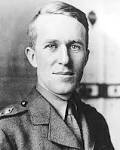
T. E. Lawrence |
death T. E. Lawrence Died 19 May 1935 at age 46 (born 15 Aug 1888). Thomas Edward (T.E.) Lawrence was a British archaeological scholar, also known as “Lawrence of Arabia,” was a British archaeological scholar, which activity he pursued assiduously from his teens up to the outbreak of WW I. In two of his important projects, he collaborated with Leonard Woolley in the British Museum Expedition excavating Carchemish, (1910-14) a Hittite city on the upper Euphrates; and in the Survey of the Wilderness of Zin. Later he became best known as a military strategist, and author for his legendary war activities in the Middle East during WW I, and for his account of those activities in The Seven Pillars of Wisdom (1926). He died in England from injuries sustained in a motorcycle crash near his home in Dorset. |
|
25 Jun 1935

Charles Sheffield |
birth Charles Sheffield Charles Sheffield (died 2002), English-born science fiction author and physicist. |
|
03 Jul 1935

André-Gustave Citroën |
death André-Gustave Citroën Died 3 Jul 1935 at age 57 (born 5 Feb 1878). French engineer and industrialist who introduced Henry Ford's methods of mass production to the European automobile industry. In 1908 he helped the Mors automobile firm increase its production from 125 cars to 1,200 cars per year. At the outbreak of World War I Citroën persuaded the French army of the need to mass-produce munitions. In 1915 he built a munitions plant whose production of shells reached 55,000 per day. Upon this success he was given the responsibility of organizing the supplying of all French munitions plants with certain vital raw materials. After the war Citroën converted his original arms factory into a plant to mass-produce a small, inexpensive automobile; the first Citroën car came off the assembly line in 1919. |
|
03 Jul 1935
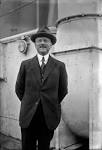
André Citroën |
death André Citroën André Citroën (born 1878), automobile manufacturer. |
|
16 Jul 1935
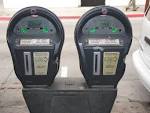
parking meter |
parking meter (technology) The world's first parking meter is installed in Oklahoma City to a design by Holger George Thuesen and Gerald A. Hale patented by Carl Magee. |
|
03 Aug 1935

Georgy Shonin |
birth Georgy Shonin Georgy Shonin (died 1997), Ukrainian cosmonaut. |
|
15 Aug 1935

Wiley Post |
death Wiley Post Died 15 Aug 1935 at age 35 (born 22 Nov 1899). American aviator who was one of the most colourful figures of the early years of U.S. aviation, and set many records. Between 15-22 Jul 1933, Wiley Post completed the first round-the-world solo flight (15,596 miles) in his Lockheed Vega 5B single-engine aircraft Winnie Mae, in 7 days 18-hr 49-min. He had made an accompanied flight around the world in 1931. Wiley Post had made his first solo flight in 1926, the year he got his flying license, signed by Orville Wright, despite wearing a patch over his left eye, lost in an oilfield accident. Post invented the first pressurized suit to wear when he flew around the world. Another credit was his research into the jet streams. He died with his passenger, humorist Will Rogers, 15 Aug 1935, in a plane crash in Alaska. |
|
11 Sep 1935
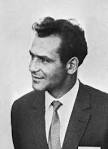
Gherman Titov |
birth Gherman Titov Gherman Titov (died 2000), Soviet cosmonaut. |
|
30 Sep 1935
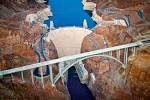
Hoover Dam |
Hoover Dam In 1935, the Boulder Dam, Boulder City, Nev. was dedicated. The concrete-arch dam, subsequently named Hoover Dam (1947), supplied the first U.S. hydroelectric plant to produce a million kilowatts. This production peak occurred in June 1943, though the first of its four generators was placed into operation on 26 Oct 1936. The power serves the Los Angeles area. |
|
06 Nov 1935

Henry Fairfield Osborn |
death Henry Fairfield Osborn Henry Fairfield Osborn (born 1857), paleontologist. |
|
11 Nov 1935

Magdi Yacoub |
birth Magdi Yacoub Magdi Yacoub, Egyptian-born cardiothoracic surgeon. |
|
04 Dec 1935

Charles Richet |
death Charles Richet Charles Richet (born 1850), winner of the Nobel Prize in Physiology and Medicine. |
|
05 Dec 1935
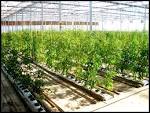
Soilless culture of plants |
Soilless culture of plants In 1935, the first large hydroponicum was established in Montebello, Cal., by Ernest W. Brundin and Frank F. Lyon, who installed a circulating system. They were issued a U.S. patent on 1 Dec 1936 for a "system of water culture." They incorporated on 19 Oct 1937 as the Chemi-Culture Company.Benefits of chemiculture include higher yields in less space, can be used even in desert gardening, quicker growth and attracts least diseases. The word hydroponics was coined in the early 1930s, by Professor Gericke at U.C.L.A. to describe the growing of plants with their roots suspended in water containing mineral nutrients. It comes from two Greek words: "hydro" (water) and "ponos" (to work, labor). |